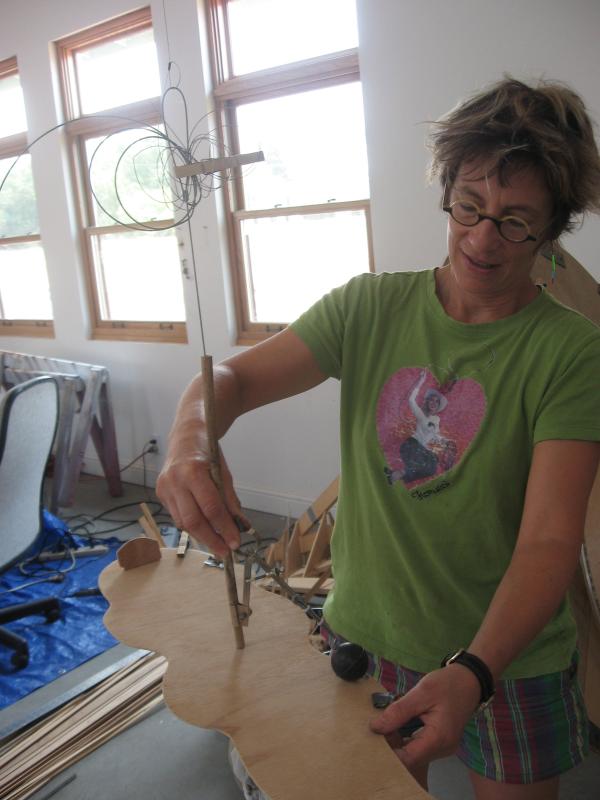1978

Sculptor Sheri Simons working on a piece inspired by the o-mikoshi she encountered on her residency through the U.S./Japan Creative Artists Program. Photo courtesy of artist
There is a phrase in Japanese that has no exact English translation. Koi no Yokan most accurately describes the feeling one gets upon meeting someone who they know they will one day fall in love with, even though they are not now in love. It is a good way to describe how artists sometimes feel when participating in the NEA’s program, the U.S./Japan Creative Artist Fellowships, created in 1978 in partnership with the Japan-United States Friendship Commission (JUSFC).
Through the program, five artists are sent to spend three months in Japan, starting at the International House of Japan in Tokyo and being free to travel throughout the country. The goal of the program is cultural understanding between the countries, focusing on a creative exchange of ideas beyond borders. The artists determine how to spend their independent residency, but receive logistical support from the International House.
NEA National Heritage Fellow PJ Hirabayashi participated in the project to explore her art form, taiko, in its homeland. She planned to connect with artists from three communities—Ainu, Okinawa, and Buraku—to explore how they use the art form to empower themselves.
Sculptor Sheri Simons participated in 2006 to research o-mikoshi, or portable shrines used in community festivals, but ended up becoming immersed in the Japanese culture. “It was slowly dawning on me that although I’d gone to Japan to research the construction and usage of these portable shrines, I was becoming more interested in them as mnemonic markers of experience and the transmission of a communal sense of space…. ‘festival’ is actually another form of community experience.”
Since this program has begun, more than 170 artists have traveled across the ocean to partake in the Japanese artistic and cultural experience. As JUSFC Assistant Executive Director Margaret Mihori noted, “The fellows under this program have comprised a steady stream of arts exchange that continues to operate long after individual fellowships are over. The enrichment of each artist and through them, the community, continues to multiply year after year.”

